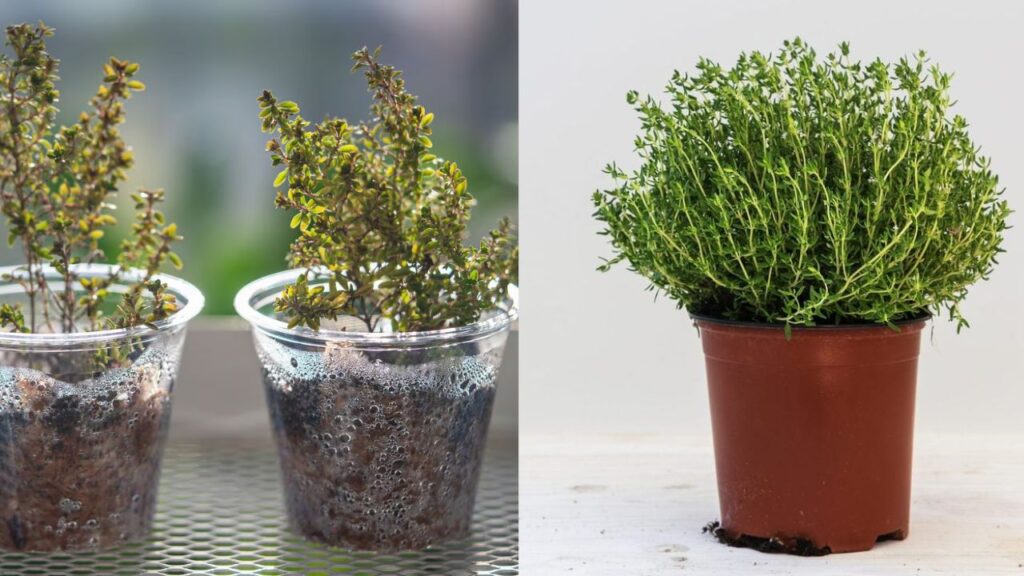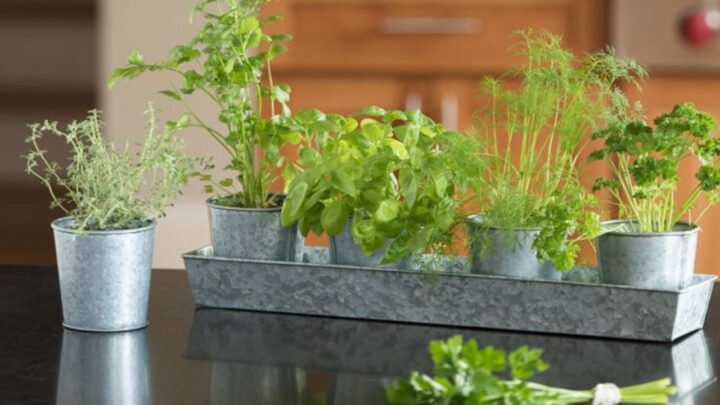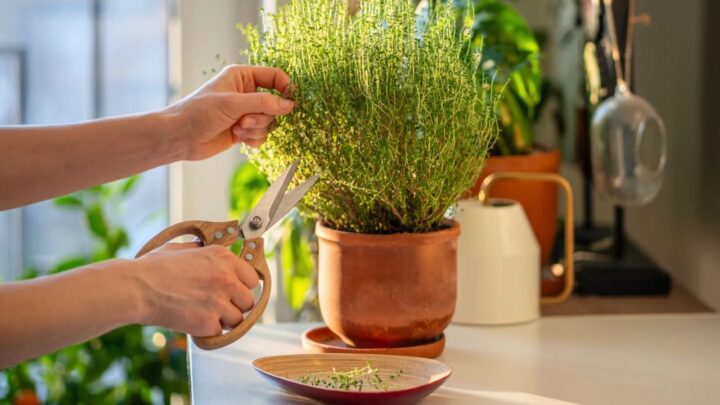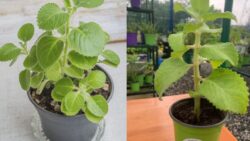Grow Thyme Indoors – Grow Thyme Indoors is a simple and rewarding way to bring fresh, aromatic herbs into your home. This herb not only adds flavor to your meals but also creates a lovely, natural fragrance indoors.

Why Choose Thyme for Indoor Gardening?
Growing thyme indoors is perfect for both beginners and experienced gardeners. Thyme plants are hardy, low-maintenance, and thrive in small pots or containers. They require moderate sunlight and minimal watering, making them ideal for apartments or homes with limited outdoor space. Additionally, thyme has natural air-purifying properties, helping your indoor environment feel fresher. Culinary lovers also benefit from having a ready supply of fresh thyme for cooking, teas, or garnishing dishes.
Choosing the Right Container and Soil
To successfully grow thyme indoors, selecting the right pot and soil is crucial. Containers should have good drainage to prevent root rot. Clay or ceramic pots are excellent choices. Use a well-draining potting mix, preferably one designed for herbs or succulent plants. Adding a layer of gravel at the bottom of the pot improves drainage. Proper soil and container setup ensures healthy roots and prevents overwatering issues.

Light and Water Requirements
Thyme loves bright light. Place your plant near a south-facing window or under a grow light for at least 6 hours a day. Avoid overwatering; thyme prefers slightly dry soil. Check the soil by inserting your finger about an inch deep—water only if it feels dry. Overwatering can lead to fungal issues, while insufficient light can make the plant leggy. Maintaining balance is key to a thriving indoor thyme garden.
Step-by-Step Guide to Grow Thyme Indoors
- Select Healthy Seeds or Plants
Choose organic thyme seeds or a healthy starter plant from a nursery. Look for vibrant green leaves and strong stems. Seeds are ideal for those who enjoy watching the entire growth process, while starter plants offer faster results.
- Prepare the Pot
Select a pot with drainage holes and fill it with a well-draining potting mix. Add a thin layer of gravel for extra drainage. Ensure the pot is large enough for roots to expand comfortably.
- Sow Seeds or Plant Cuttings
If using seeds, sprinkle them on the soil surface and lightly cover with a thin layer of soil. For cuttings, gently press the stems into the soil and water lightly. Keep the soil moist until seeds germinate or cuttings establish roots.
- Provide Adequate Light
Place the pot near a bright window or under a grow light. Rotate the plant occasionally to ensure even growth. Aim for at least 6 hours of sunlight daily for optimal leaf development.
- Water Carefully
Water thyme sparingly, allowing the soil to dry slightly between watering sessions. Avoid waterlogging, which can damage roots. Use a spray bottle for delicate watering of seedlings.
- Prune and Harvest
Regularly trim the plant to encourage bushier growth. Harvest small stems as needed for cooking or teas. Pruning also prevents the plant from becoming woody and promotes fresh, aromatic leaves.

Extra Tips for Indoor Thyme
- Use a grow light during winter months for consistent growth.
- Place the plant near your kitchen for easy harvesting.
- Rotate the pot weekly to ensure even light exposure.
- Fertilize once a month with a balanced, water-soluble fertilizer.
- Watch for pests like aphids or spider mites and remove promptly.
FAQs
How often should I water indoor thyme?
Water only when the soil feels dry an inch below the surface. Overwatering can harm the plant more than under-watering.
Can thyme grow without natural sunlight?
Yes, using a grow light that provides 6–8 hours of light daily can keep thyme healthy indoors.
When is the best time to harvest thyme?
Harvest leaves once the plant has multiple stems and is at least 6 inches tall. Regular trimming encourages new growth.
Do I need to fertilize thyme indoors?
Fertilizing once a month with a mild, water-soluble fertilizer supports healthy leaves without overfeeding.
 Centrelink $600 Carer Supplement 2025 – October Payment Delay Update for Australian Recipients
Centrelink $600 Carer Supplement 2025 – October Payment Delay Update for Australian Recipients
Growing thyme indoors is not only simple but also incredibly rewarding. With the right care, your home will be filled with natural fragrance and a fresh supply of flavorful leaves. Every pruning and harvest gives a sense of accomplishment and brings the joy of gardening indoors. Start today, and enjoy the calming aroma and culinary benefits of your thriving thyme plant!



